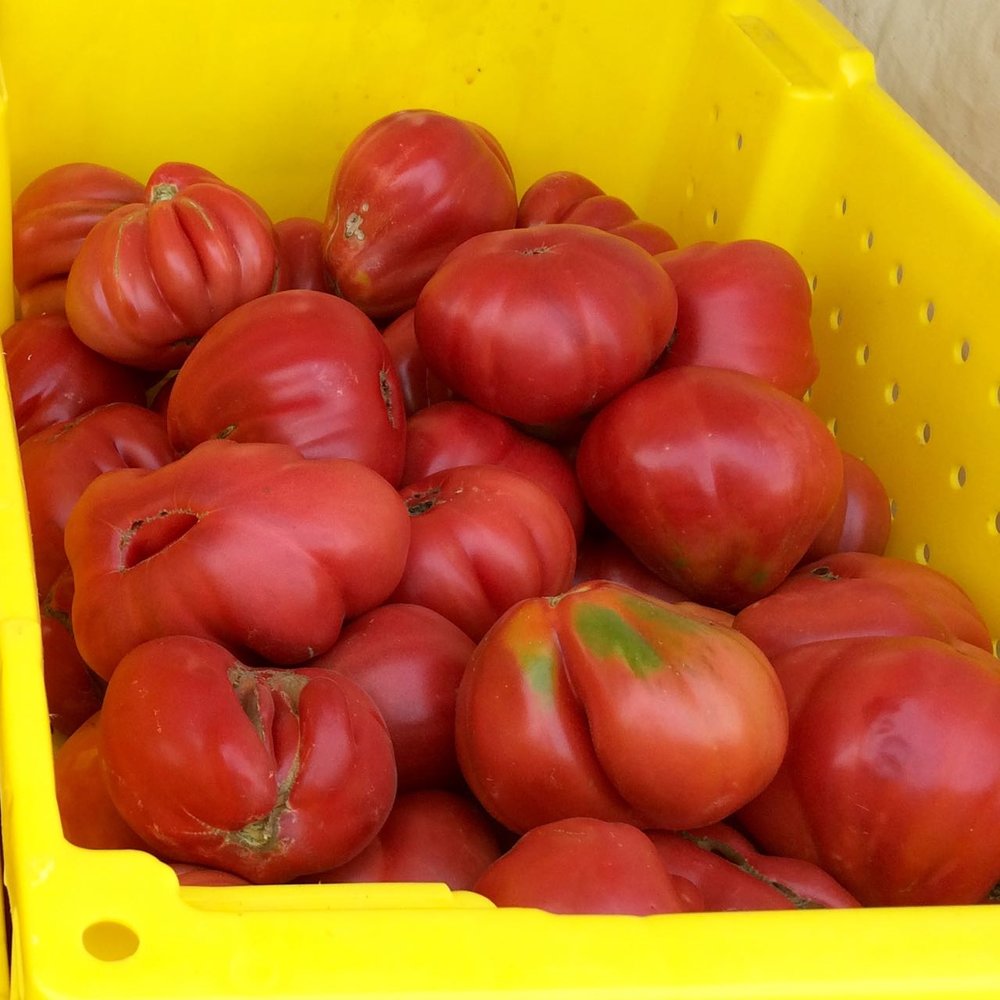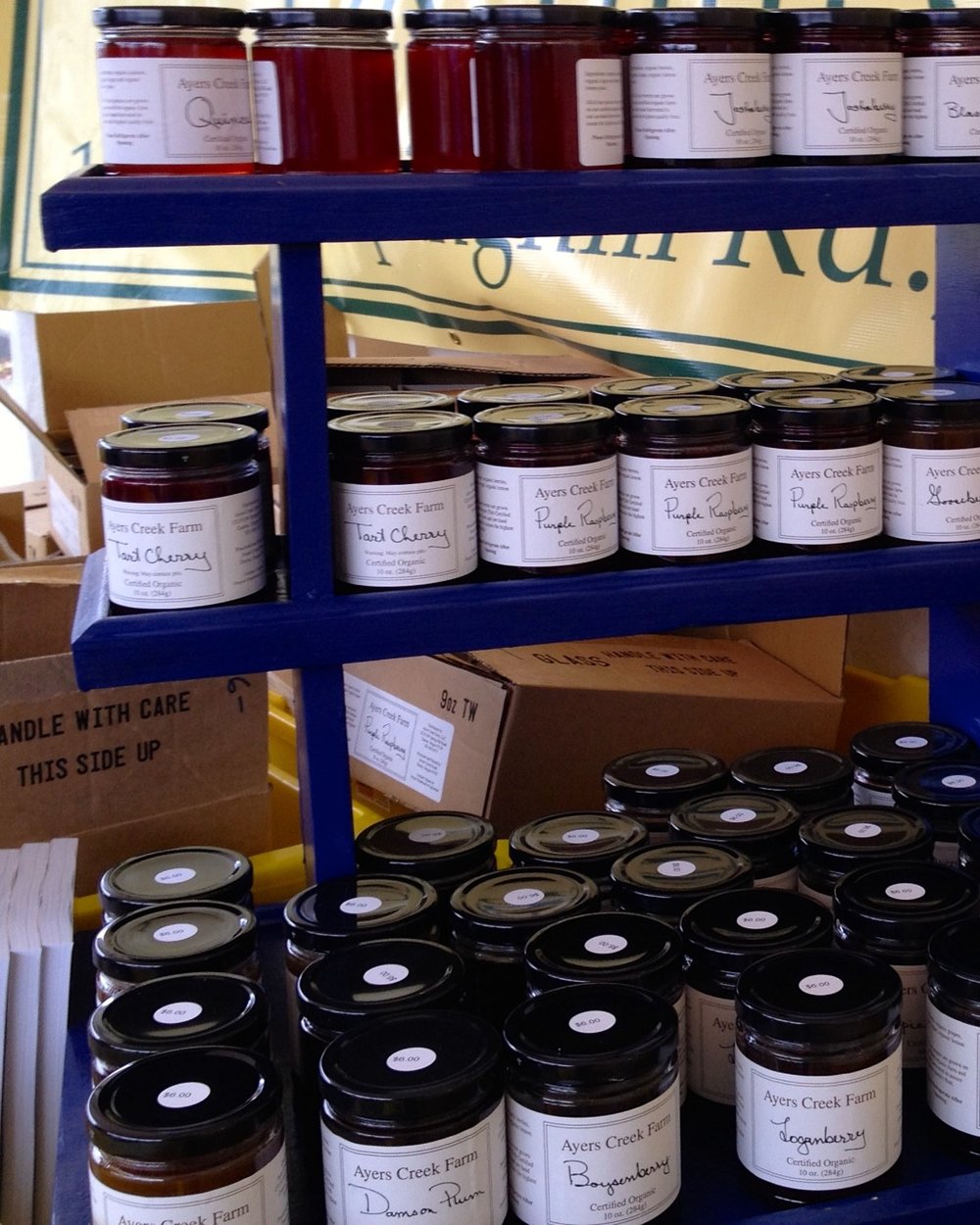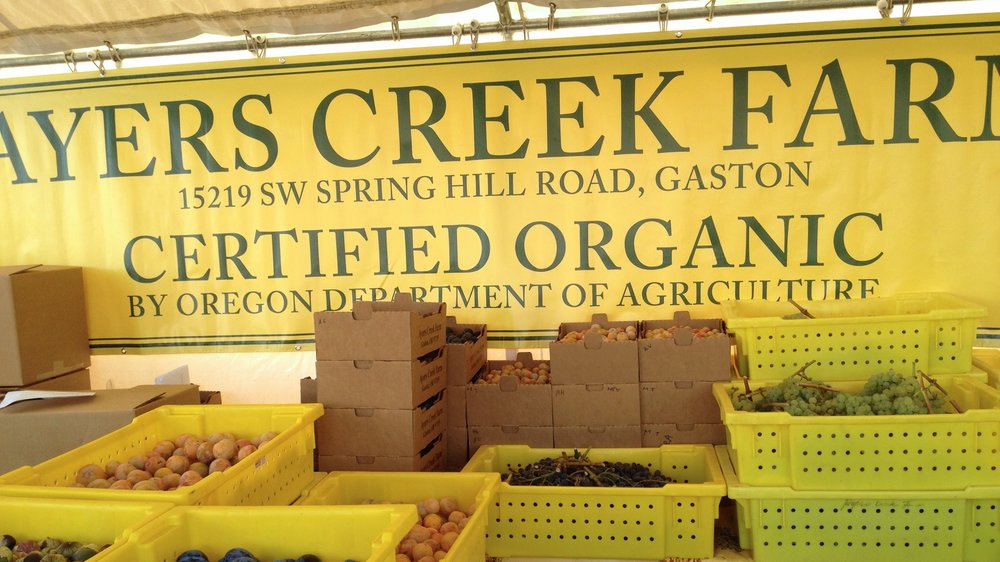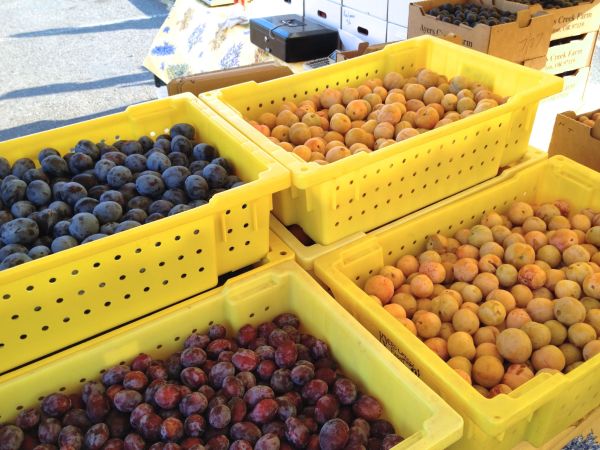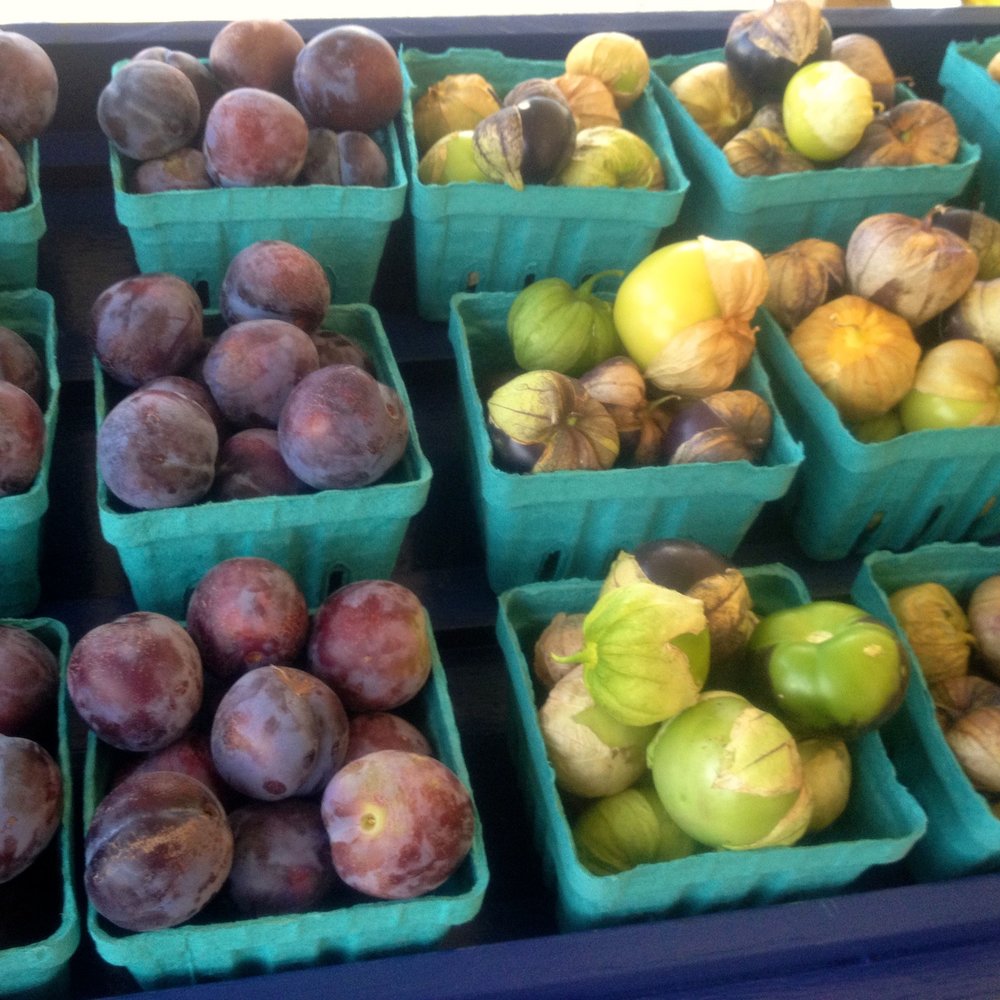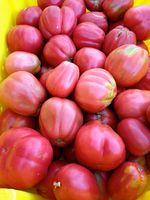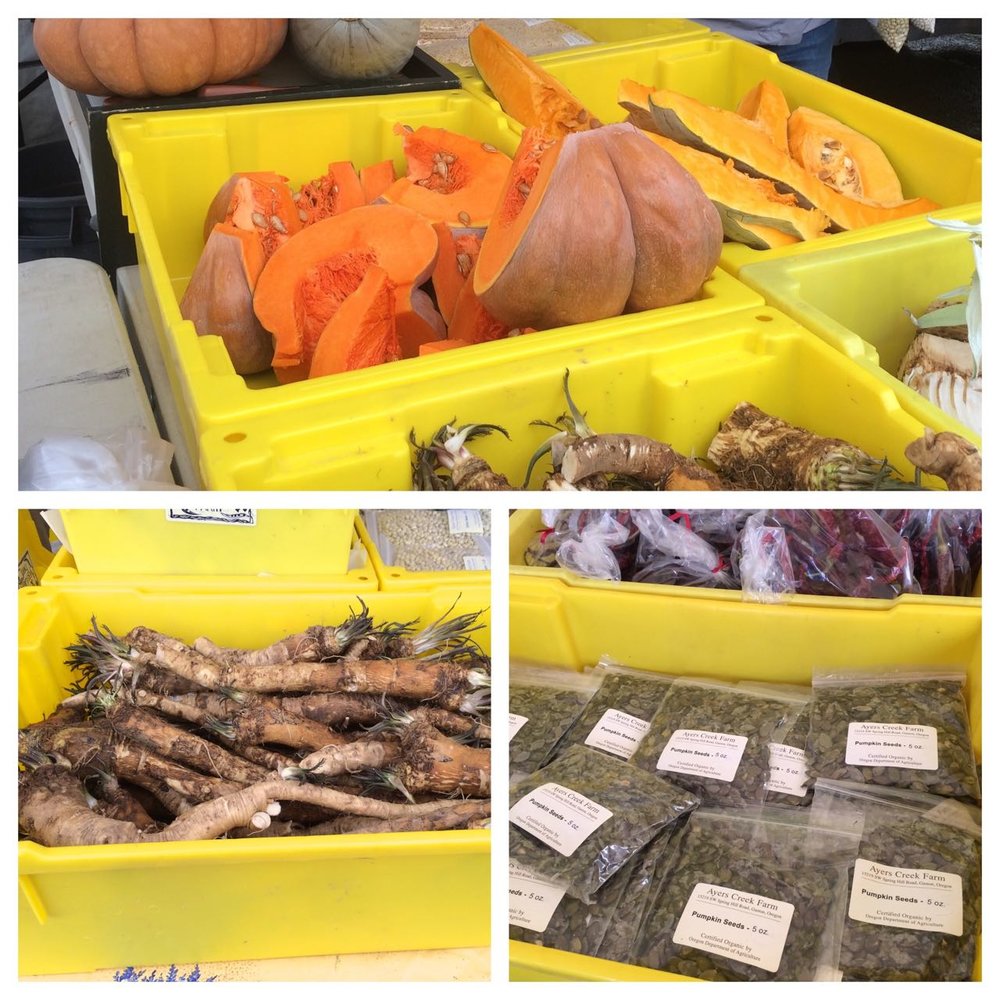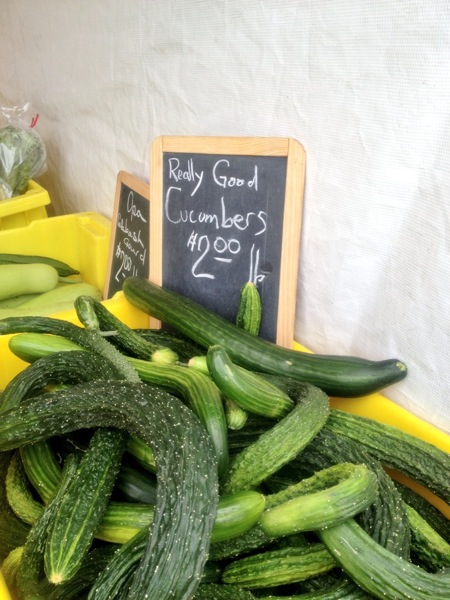Ayers Creek Farm Newsletter September 20 2015 Market
Guest User
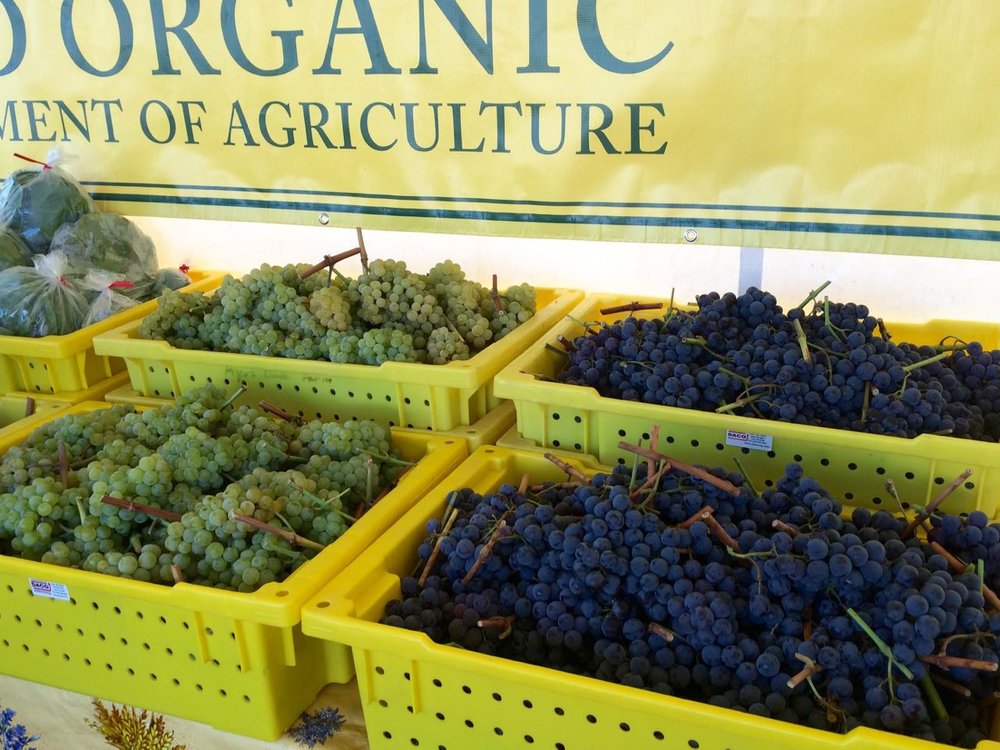
We conclude our summer market season this Sunday, and return on the 15th of November for our last quartet. Looking at the fields and orchards, it is going to be a fine set of holiday markets. Beautiful rows of chicories, escaroles and field greens will join the pantry crops. We will continue to deliver table grapes to both Food Front stores, so if you all buy them Josh has to call us up and order more, and everyone is happy.
Our preserves, albeit in a more limited selection until we get down to Sweet Creek Foods in late October, are carried by the following stores:
City Market, 735 NW 21st Ave.
Food Front, both Hillsdale & NW Thurman
Foster & Dobbs, 2518 NE 15th Ave
Our Table, 13390 SW Morgan Road, Sherwood
People's Coop, 3029 SE 21st Ave
Pastaworks, 3735 SE Hawthorne Blvd
Vino, 138 SE 28th Ave.
The grapes this week are a touch of 'Autumn in New York' – sparing you all a Billy Joel ear worm, eh? Interlaken, Canadice, Steuben, Sheridan and New York Muscat are the progeny of the New York Fruit Agricultural Experiment Station at Geneva, New York, part of Cornell University. In the 1960s and 1970s, the Geneva fruit breeding program was at its peak and as you taste these four varieties, we hope you will be impressed with the sheer breadth of their flavors. Even the apple, a paragon of diversity, doesn't come close to the grape. Interlaken, Canadice, nameless and Jupiter are chaste, lacking the biochemical events associated with seed development and maturation, so the flavors resulting from seed ripening, especially the bold spicy and floral notes, are missing. That is not entirely a deficit because other flavors are apparent, no longer masked. Be sure to compare the chaste varieties with the fecund varieties, New York Muscat, Steuben, Sheridan and Price. You can see how the seed creates a consistently larger and more complex flavor.
There is only a teaspoon of farms nationwide who offer such a broad array of such distinctive grape varieties. Due to the early season, this is the first time we have had eight varieties to enjoy as you watch the full eclipse of the "super moon." It is about two hours, so buy enough grapes to savor the convergence of an exceptional season for table grapes and a rare lunar spectacle. And put aside that pointless fussiness about grape seeds, just as you decided that kale is pretty delicious a couple of years ago after shunning it for decades; the seeds are an absolutely delicious dimension to the berry, as is the skin. A few years from now, some researcher will anoint the fecund grape the new superfood and you will feel a whole lot healthier knowing you we ahead of the science.
Interlaken, Canadice, Steuben, Sheridan, and numerous other grapes from that period, are named after towns in the Finger Lakes region of New York. It is a wonderful tradition that has fallen by the wayside as the station's public breeding program has stumbled into the morass of "club varieties" and the attendant cheesy commercial names. Club varieties are patented by the breeding program and released to a limited number of growers in order to keep prices high, avoid market saturation and, putatively, to maintain high quality, i.e. uniformity.
There is a tendency to pronounce Interlaken as though it is named after a city in the Bernese Oberland of Switzerland. No, the Interlaken of the grape is, as noted, a New York Finger Lake town located nowhere near the Alps and the second syllable is pronounced with a hard "a" as in "lake." Goodness sakes, we don't say Loch Oswego, do we? Well, perhaps on the 25th of January after consuming a few too many wee drams in tribute to the great poet, and forgivably, but other times never. And Canadice is pronounced with a hard "i" as in dice. Don't Eurozone them.
The harvest of beans has started and Angelica, who is in charge of their release, has handed over black turtle, Tarbesque and purgatorio for us to package for this week's market. We have given Borlotti Gaston baby eyes, but she is adamant that they need more time. It is very important to defer to staff on these matters.
We produce our own seed for most of the crops we grow, and in the process we have also worked to improve the quality of those crops, and adapt them to our soils and climate. It is a long process, but the results reinforce our efforts. In first few years of growing Amish Butter, Linda Colwell helped us as we carved rotten kernels off the misshapen ears with the sharp end of a church key in order to salvage enough to sell. That tedium is now history, and this year's ears are magnificent is every respect, the result of repeated selection over a decade. Last year, we were frustrated by problems with the black radish and have started the process of selecting roots that have better frost resistance, and working with Ave Gene's staff we are bringing back the hard-skinned storage melons we used to grow about seven years ago. These are true melons, not winter melons of Asian cuisine.
This year we will feature those melons and the mixed barley at the 2nd Variety Showcase put on by Lane Selman and the Culinary Breeding Network. As amateur breeders, we need a bit more adult supervision, so Lane has assigned two restaurants to keep us in line. Sarah Minnick of Lovely's 50/50 is developing recipes to showcase the qualities of the barley mixture. We tried her 'Triple Barley Cookies' yesterday. Made from flaked barley, barley flour and sprouted barley, they are wonderful. Sarah has a roasted barley ice cream in the works to accompany them. Joshua McFadden of Ave Genes will highlight the melon project called 'Ave Bruma' or behold the winter solstice, from the restaurant's first flavor selection. Later, around the solstice, we will bring in another pile of melons for his staff to taste and put aside again the seed from the best flavored.
At market, we will also have a smaller tomatoes (Astiana and Striped German), tomatillos, preserves, chickpeas, lettuce, beets, onions and other alliums. We will also have bunches of thyme.
We hope to see you all tomorrow,
The Boutards
Ayers Creek Farm
Gaston, Oregon
